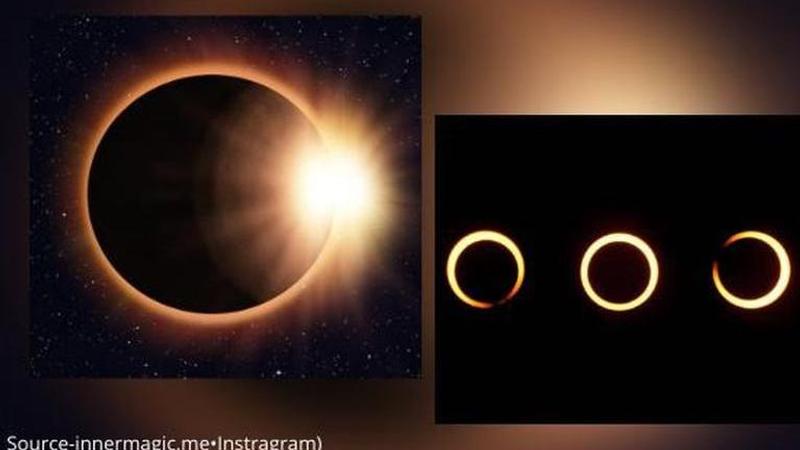Published 11:04 IST, June 20th 2020
What is the difference between Solar Eclipse and Lunar Eclipse? Read more
The first Solar Eclipse of 2020 is around the corner and will be witnessed on June 21 2020. Here is what makes it different from a Lunar Eclipse.

The ‘Ring of Fire’ Annular Solar Eclipse will occur on June 21, 2020. This marvellous celestial event can be witnessed in many countries around the world. Here is everything you need to know before witnessing the eclipse.
What is a Solar Eclipse?
A Solar Eclipse is a result of the moon’s movement, in which it passes between the Earth and the Sun. The Sun, the Earth and the Moon all lie in the same line during this phenomenon. There are four types of Solar Eclipses:
- Total Solar Eclipse: This phenomenon occurs when the Moon is able to completely cover the Sun, as seen from the earth. This phenomenon can only be seen from a limited area which is usually about 160 km (100 mi) wide and 16,000 km (10,000 mi) long. Although it is a total solar eclipse, all areas lying outside this track may be able to see a partial eclipse of the Sun.
- Partial Solar Eclipse: A partial solar eclipse occurs when the Moon only partially covers the disk of the Sun.
- Annular Solar Eclipse: An annular solar eclipse happens when the Moon appears smaller than the Sun as it moves centrally across the solar disk. This leads to the formation of a bright ring of sunlight around the moon, which is also called an annulus. The June 21, 2020 eclipse is an Annular Solar Eclipse.
- Hybrid Solar Eclipses: A hybrid solar eclipse is the rarest form of the solar eclipse. It occurs and changes from an annular to a total solar eclipse, and vice versa, along its path.
What is a Lunar Eclipse?
The Moon does not have its own light, therefore, it shines because its surface reflects the Sun's rays. A lunar eclipse occurs when Earth comes between the Sun and the Moon, and blocks the Sun's rays from directly reaching the Moon. These are the three types of lunar eclipses.
- Total Lunar Eclipse: A total lunar eclipse occurs when Earth's umbra, which is the central, dark part of its shadow hides all of the moon’s surface.
- Partial Lunar Eclipse: A partial lunar eclipse is seen when only part of the Moon's surface is obscured by Earth’s umbra.
- Penumbral Lunar Eclipses: A penumbral lunar eclipse occurs when the Moon travels through the indistinct penumbral portion of Earth’s shadow.
What is the difference between Solar Eclipse and Lunar Eclipse?
Solar Eclipses usually occur once in 18 months, while Lunar Eclipses occurs twice a year. As compared to a solar eclipse, the lunar eclipse is more widely visible from different places on Earth. A solar eclipse occurs during the day, and usually on a new moon day, while lunar eclipses occur during the full moon night. While it is unsafe to view the solar eclipse through naked eyes, and you need protective glasses, the lunar eclipses are perfectly safe to view with naked eyes.
Solar Eclipse June 2020
As per the reports of NASA, the Solar Eclipse of June 2020 will be visible from Nepal, India, China, Pakistan, the Democratic Republic of Congo, South Sudan, Ethiopia, Eritrea, Yemen, Oman, Taiwan and Guam on June 21, 2020. Mr Hassan Al Hariri, who is the CEO of Dubai Astronomy Group, said in an interview given to a science portal, that this partial solar eclipse will be massive in terms of the solar disk coverage by the moon. He also added that this will an amazing opportunity for people around the world to observe the celestial phenomena. In addition to this, the International Astronomical Centre will be broadcasting the eclipse on its social media channels.
Updated 11:04 IST, June 20th 2020



